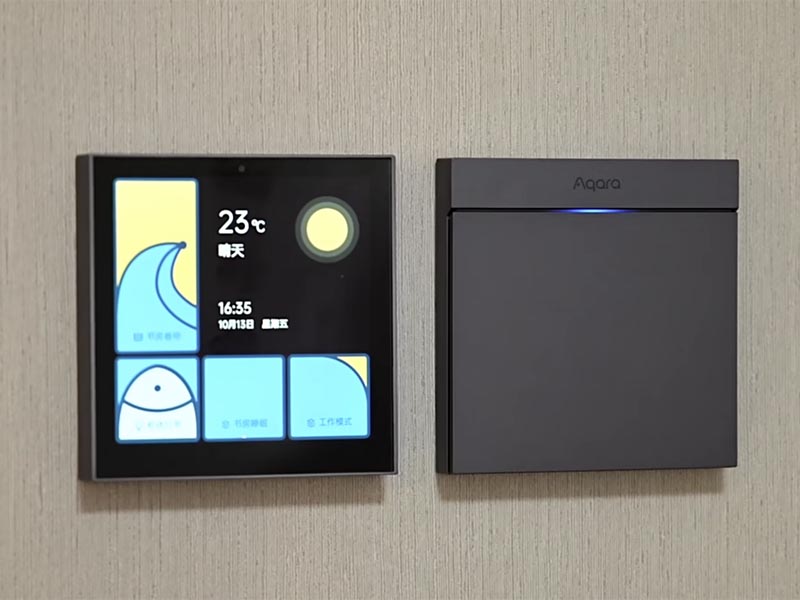Android SBC in Smart Home Systems: Building the Future of Connected Living
Learn how Android SBCs bring intuitive interfaces, flexible connectivity, and AI-ready performance to smart home products. Understand system design, hardware integration, and real-world applications using Rockchip and Allwinner SoCs.

In this structure:
- The Android SBC acts as the local intelligence hub.
- It communicates with peripheral sensors, smart plugs, and lighting modules via UART, I²C, or Wi-Fi.
- The UI layer provides visual control, while background services handle scheduling, scene logic, and voice commands.
This design minimizes cloud dependency while keeping essential control available locally — even if the internet goes down.
Practical Smart Home Applications of Android SBCs
1. Smart Wall Panels and Central Control Units
One of the most common uses for Android SBCs is in smart wall panels — touchscreen interfaces that unify home control.
These panels often include:
- 7-inch or 10.1-inch TFT display with capacitive touch
- Wi-Fi / BLE / RS485 / KNX communication
- Custom Android launcher UI for lighting, HVAC, and curtains
The Android OS allows easy customization of themes, icons, and widgets, while SBC hardware like the RK3566 provides smooth rendering and low-latency response.
2. Smart Door Systems and Intercoms
Video intercoms and digital doorbells rely on multimedia processing and camera support.
Android SBCs natively support MIPI CSI cameras, audio codecs, and echo-cancellation frameworks, making them ideal for interactive entry systems.
Features include:
- 2-way video communication
- Remote unlock via mobile app
- Face recognition with NPU acceleration
3. Energy Management and Environment Monitoring
As sustainability becomes a global priority, Android SBCs enable smart energy dashboards that monitor power consumption and air quality.
Developers can integrate:
- Zigbee or Modbus sensors
- Real-time graph visualization
- AI-based anomaly detection
This turns the smart home into a data-driven ecosystem that learns from usage patterns to optimize energy efficiency.
4. Voice-Enabled Automation and Edge AI
Android SBCs with built-in NPUs (like RK3588 or RK3566N) support on-device AI inference for:
- Voice command recognition
- Gesture control
- Human presence detection
Local AI processing improves privacy and reduces cloud latency — a key requirement for real-time home automation.
Hardware Considerations for Smart Home SBC Design
When selecting or customizing an Android SBC for home automation, several hardware factors are essential:
| Component | Recommendation | Notes |
|---|---|---|
| SoC | Rockchip RK3566 / PX30 / A133 | Balance between performance and cost |
| Display Interface | MIPI DSI or LVDS | For touch panels and HMI screens |
| Connectivity | Wi-Fi + BLE + Zigbee | Optional KNX / RS485 for legacy systems |
| Storage | eMMC 8GB–64GB | For system + OTA partitions |
| Power | DC 5V–12V | Must support low standby current |
| I/O | GPIO, UART, I²C, USB | For sensors and peripheral control |
Custom boards often integrate audio amplifiers, TP-UART modules, and secure boot chips (ATECC608) to meet specific project needs.
Software and Firmware Customization
The Android BSP (Board Support Package) plays a crucial role in tailoring the system.
Developers can modify:
- Kernel drivers for I²C, SPI, GPIO
- Device Tree for display and sensor configuration
- System services for power management
- Launcher and UI for home automation functions
A well-optimized BSP ensures:
- Fast boot (under 10 seconds)
- Stable standby behavior
- Low thermal footprint
- OTA compatibility
Additionally, the HAL layer (Hardware Abstraction Layer) bridges Java APIs and native drivers, enabling direct integration with smart devices and automation protocols.
Security and Long-Term Maintainability
Smart homes handle sensitive data — camera feeds, occupancy logs, and user credentials.
Android SBCs can leverage existing security frameworks to maintain system integrity:
- Verified Boot and Secure Boot mechanisms
- KeyStore for encrypted credentials
- SELinux enforcing system policies
- OTA with signature verification
For commercial deployments, maintaining long-term BSP support is crucial.
Manufacturers like Rockchip and Allwinner now offer extended LTS kernels and update SDKs, allowing integrators to keep devices secure and up to date for 5+ years.
Advantages of Using Android SBCs in Smart Home Projects
| Advantage | Description |
|---|---|
| Fast UI Development | Use Android Studio for GUI prototyping and layout design |
| App Ecosystem | Reuse mobile apps or APKs for automation |
| Multimedia Integration | Native camera, video, and audio APIs |
| AI Compatibility | Support for TensorFlow Lite and ONNX models |
| Cross-Platform Connectivity | Easy integration with Google Home, Alexa, or custom MQTT |
| Commercial Scalability | Cost-effective and production-ready hardware options |
Real-World Example: Android-Based Smart Home Controller
Silicore’s engineering team recently developed a 7-inch Android smart home control panel based on the Rockchip PX30 SoC.
Key features include:
- Capacitive multitouch panel (1024×600)
- Integrated Wi-Fi/Bluetooth/KNX communication
- Custom Android launcher UI with multilingual support
- AI-based scene learning and scheduling
This design demonstrates how a single SBC can manage lighting, HVAC, energy meters, and security sensors — all with an elegant Android interface.
Future Outlook
The rise of Matter and Thread protocols is accelerating smart home standardization.
Android SBCs are well-positioned to adopt these frameworks due to their open Linux base and flexible network stacks.
In the coming years, expect to see:
- Smarter edge processing combining AI and sensor fusion
- Multi-display integration across rooms
- Hybrid Android + Linux systems for performance-critical control
As hardware becomes more efficient and BSPs more modular, Android SBCs will continue to power the next generation of connected living environments.
Conclusion
Android SBCs bridge the gap between embedded hardware and user-centered smart home design.
They bring together the flexibility of Linux, the usability of Android, and the scalability of modern ARM processors — enabling developers to create smarter, safer, and more engaging living spaces.
From wall-mounted HMIs to AI-powered gateways, these boards are redefining how homes think, react, and adapt.
For anyone building the future of smart automation, Android SBCs are not just an option — they are the foundation.